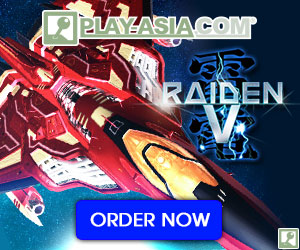Oceanhorn: Monster of Uncharted Seas by developer Cornfox & Bros is an isometric, action-adventure RPG that pays homage to Nintendo’s the Legend of Zelda series (or more appropriately, Wind Waker). As the game’s unnamed protagonist, the player must explore treacherous dungeons and solve object-based puzzles in an effort to find their missing father. For this to happen, the protagonist must harness the power of the Sacred Emblems and use it to kill the seabeast known as Oceanhorn.
The game begins with the player exploring Hermit’s Cliff, a small island that serves as the game’s tutorial. From there, the player can learn the in-game controls; read wooden signs for helpful tips; and explore one of the many dungeons the game has to offer. After finishing the tutorial, the player is sent to the World Map, where they can sail a boat to one of the many available islands. The first island to appear is Tikarel, a small landmass that contains a costal town inhabited by multiple NPCs. At first, this town only serves to advance the story. It should be mentioned that merchant NPC’s are present at this location, but they are not useful to the player until much later in the game.
Once the player meets the conditions of this island, Bomber Island – the first of many quest locations – will appear on the World Map. Oceanhorn’s sailing mechanics pale in comparison to Wind Waker. The boat in Oceanhorn moves on its own as it travels to a new location. The mechanics in Wind Waker were more diverse, allowing the player to explore the ocean environments at their own pace. This limitation reduces the scope of Oceanhorn’s oceanic world.
As a game, Oceanhorn is very basic in appearance. The inventory system, Flashback Log (previously viewed cinemas) are condensed into a single menu screen, which can be accessed by pressing the + button. The player can easily navigate through this menu by swiping their finger across the Nintendo Switch’s screen. Everything from equipping items to selecting a previously viewed cinema is done with touchscreen controls, which isn’t commonly used in most Nintendo Switch games. It’s a convenient feature that should be used more often.
The puzzles are comprised of pushing blocks, stepping on buttons and finding keys to unlock doors. Most of the puzzles are based on patterns. For example: some dungeons may have up to six blocks in some rooms, blocking a door or hallway. The player must push these blocks around until they can make an opening. Reset switches are present with most puzzles, and they can be used to reset a puzzle when stepped on. Bombs can also be used in some cases, especially on doors or hallways that are blocked by debris or hidden behind objects. The concept itself is executed well. In a lot of ways, it mimics the classic RPGs from the 16-bit days of gaming.
The combat system is also a nod to classic action RPGs (think any 2D iteration of the Legend of Zelda). While fighting the game’s many enemies (i.e. rats, birds, zombies, etc), the player will immediately notice the similarities between the protagonist, his attacks and Link from Zelda. While rapidly tapping the X button, Oceanhorn’s protagonist does wide swipes with his sword, hitting everything within range. If the player presses and then holds the X button briefly, and then releases it — the protagonist will perform a spin attack with his sword. Blocking is achieved by pressing and holding ZR. In some instances, blocking can also be used to reflect projectiles back to the enemies that throw them. It’s a useful feature that comes in handy quite often.
Graphically, Oceanhorn is a beautiful game. The environments contain eye-popping colors that stand out in both console and portable mode. The game’s characters all contain a good amount of detail, and the animation is top-notch. The protagonist especially looks pleasing to the eyes with his bright, blue tunic and brown, spiky hair. The only issue is that some of the dungeons look cookie-cutter in appearance.
Oceanhorn is a fun, but casual action RPG that does an admirable job of mimicking Nintendo’s Zelda franchise, while somehow managing to maintain its own identity in the process. It’s a rare occurrence for a game to be inspired by an entire franchise – and still be fun to play – without insulting its audience in the process. Oceanhorn is definitely that game.
Mike Pittaro
Platform: Nintendo Switch
Developer: Cornfox & Bros
Publisher: Cornfox & Bros
ESRB: E 10+ (Everyone 10+)
Price: $14.99
Oceanhorn: Monster of Uncharted Seas Official Website:
http://oceanhorn.blogspot.com/
| Review Score | |
|---|---|
| Graphics | |
| The environments contain eye-popping colors that stand out in both console and portable mode. | |
| Sound | |
| Great sound effects and a decent soundtrack. | |
| Gameplay | |
| Challenging puzzles and retro-style combat. | |
| Overall | |
|---|---|
| Oceanhorn is a fun, but casual action RPG that does an admirable job of mimicking Nintendo's Zelda franchise. | |
